|
|
|
Monday, April 16th, 2018
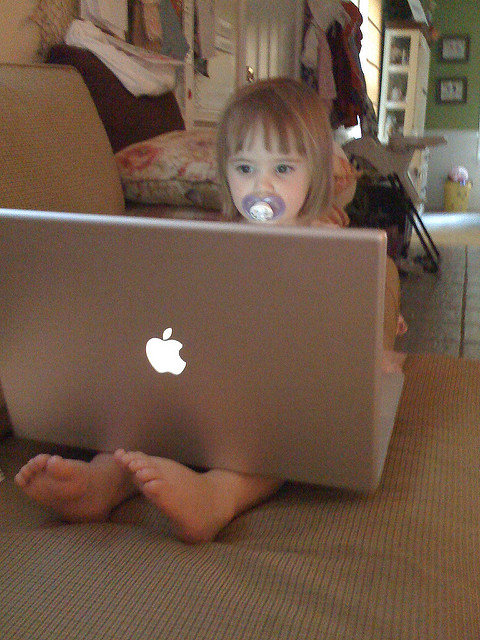
Poking through 11+ years of posts I find information that’s as useful now as when it was written.
Golden Oldies is a collection of the most relevant and timeless posts during that time.
This post is from 2014. Study after study has proven that more successful founders are in their 40s and 50 than in their 20s. More on the most recent studies this week.
Read other Golden Oldies here.
On one hand you have Jim Goetz, partner at Sequoia Capital, lamenting the lack of enterprise startups and on the other you have Sequoia’s Michael Moritz, “an incredibly enthusiastic fan of very talented twentysomethings starting companies. They have great passion. They don’t have distractions like families and children and other things that get in the way.”
Other things such as experience.
The shallowness of so many of today’s startups makes a great deal of sense if you remember the advice given to every aspiring writer, i.e., write about the things you know; write from your own life and experiences.
Investors give entrepreneurs similar advice, which is probably why you have an abundance of hook-up apps, gossip apps, games and social time-wasters.
And then there is the question of what purpose our economic growth actually serves. The most common advice V.C.s give entrepreneurs is to solve a problem they encounter in their daily lives. Unfortunately, the problems the average 22-year-old male programmer has experienced are all about being an affluent single guy in Northern California.
Monday we looked at the economic dangers from Silicon Valley’s generational gap highlighting the incredible waste of talent engendered.
But the real stupidity in the rush to fund the young is that their success is a myth and not backed up by any kind of hard data.
A 2005 paper by Benjamin Jones of the National Bureau of Economic Research studied Nobel Prize winners in physics, chemistry, medicine, and economics over the past 100 years, as well as the inventors of revolutionary technologies. Jones found that people in their thirties contributed about 40 percent of the innovations, and those in their forties about 30 percent. People over 50 were responsible for 14 percent, the same share as the twentysomethings. Those under the age of 19 were responsible for exactly nothing. One study found that even over the last ten years—the golden age of the prepubescent coder, the youth-obsessed V.C., and the consumer Internet app—the average age of a founder who could claim paternity for a billion-dollar company was a rickety 34.
Everybody in tech focuses on the importance of “data driven” decisions—until the data doesn’t support the decision they want to make.
That’s when they start talking about the importance of “gut instinct” and “unconscious pattern recognition.”
Data only matters when it supports prevailing prejudice.
Flickr image credit: Deryck Hodge
Posted in Golden Oldies, Innovation | No Comments »
Tuesday, April 10th, 2018

It’s so sad. At least it is if you believe Vinod Khosla, who claims that no one over 45 has new ideas, let alone disruptive ones.
That doesn’t bode well for a new his new healthcare venture.
Amazon is forming a joint venture in healthcare aimed at employees with J.P. Morgan and Berkshire Hathaway, according to a company press release.
Obviously, Khosla and his groupies forgot to tell 54 year-old Jeff Bezos that he is dead in terms of new ideas and that his co-founders, Jamie Dimon, 62 and Warren Buffett, 87, are even deader.
Not only are his co-founders old-to-ancient, one of his first hires was a geriatrician (in case you don’t know, that’s a doctor that specializes in the Medicare crowd)
Must be those dead brain cells at work, since the tech crowd, who are disrupting healthcare with bio hacks and drop-in clinics, know that speed and convenience are what’s needed.
What is it that old guys can see — and the under-40 just don’t get?
If Amazon is looking to disrupt the healthcare industry, why start with geriatrics -— a specialty that hardly seems cutting-edge? But what tech experts don’t know, and what Amazon has figured out, is that to provide high-quality health care for seniors, physicians must be innovative — and disruptive.
Cutting edge IDEO figured that out in 2016.
Just as writers must use their life experience to write with any kind of authenticity, you can’t expect innovations from people who have never experienced or noticed the problem.
When your body, and those in your social circle, work as they should 99% of the time you are unlikely to have a handle on the difficulty of managing multiple, chronic diseases, especially with severely limited resources — financial and human.
So let’s hear it for the old crowd, may they focus their efforts on the problems and challenges of which their younger brethren are barely aware.
Hat tip to Emily White for sending the article.
Image credit: Stuart Richards
Posted in Ducks In A Row, Hiring, Innovation | No Comments »
Monday, April 9th, 2018

Poking through 11+ years of posts I find information that’s as useful now as when it was written.
Golden Oldies is a collection of the most relevant and timeless posts during that time.
Since the start of this blog 12 years ago, I’ve written numerous times about the sheer idiocy of using age to screen talent. This post mentions several examples that easily refute Vinod Khosla’s ignorant comment on age and creativity, but here is an even better example, since software is supposed to be a young person’s game.
Yukihiro Matsumoto was born in 1965; in 1995 he released the Ruby programming language to open source. Of course, at 30 he was still within Khosla’s window. In 2012 he open-sourced MRuby, in 2014, at the ripe old age of 49 he open-sourced his work on streem, a new scripting language and he is still going strong.
Age as a criteria when hiring is just plain stupid, no matter the size of your company.
Read other Golden Oldies here.
It’s always interesting to see young people following in the footsteps of their predecessors.
Even more so when they hotly deny doing it.
But the frosting on the denial cake is that they are following in some of the stupidest footsteps.
Which they are doing in droves.
Last week I wrote how stupid it is to stereotype 80 million millennials.
Before that is was management’s stupidity regarding Gen X.
Age, however, is the biggest stupid and has been for decades.
For Boomers, the breakpoint for when a person became hopeless and valueless was 30; Millennials raised it to 40.
As bad as age discrimination has been in general, it is far worse in tech.
VC Vinod Khosla crystallized and popularized this mindset back in 2011.
“People under 35 are the people who make change happen. People over 45 basically die in terms of new ideas.”
That means you can expect no more creativity from Larry Page, Sergey Brin, Marc Benioff, Parker Harris and Satya Nadella. (For insight to other fields read the article.)
Not to mention that 32 year-old Mark Zukkerberg only has a few good years left.
There are thousands more at all levels, I just picked recognizable people to better illustrate the stupidity.
The difference between when the Boomers did it and now is the notice and action being taken.
This past week, the EEOC joined a probe behind a federal class action lawsuit against Google filed last month, charging that the search giant “engaged in a systematic pattern” of discrimination against applicants over the age of 40. The suit, expanding upon a related case filed earlier this year, cited data from Payscale that placed the median age of Google’s workforce at 29, with a margin of error of 4%. By contrast, the median age for U.S. computer programmers is 43.
Actually, I will probably find it somewhat amusing to watch founders as they try to meet candidate demand for the compensation and perks of the past few years in today’s do-more-with-less/revenue-based-business-model world.
That also goes for many, not all, by a long shot, tech workers who are looking for those same jobs and perks.
So heed the advice I recently gave a founder who took advantage of my standing offer of free help (both my phone number and email are posted on this blog).
He asked how to land a “star” candidate looking for “yesterday’s” compensation and refused to consider anything less.
My advice was to take a pass, refer him to Facebook or Google hire a reality-based programmer who can do the needed job and was sincerely interested in his product and vision.
The only thing he might lose were a few late night bragging rights.
In short, grow up, get smart and hire talent — no matter its age or color or gender.
Image credit: Ben Sutherland
Posted in Culture, Entrepreneurs, Golden Oldies, Hiring, Personal Growth | 1 Comment »
Tuesday, March 20th, 2018
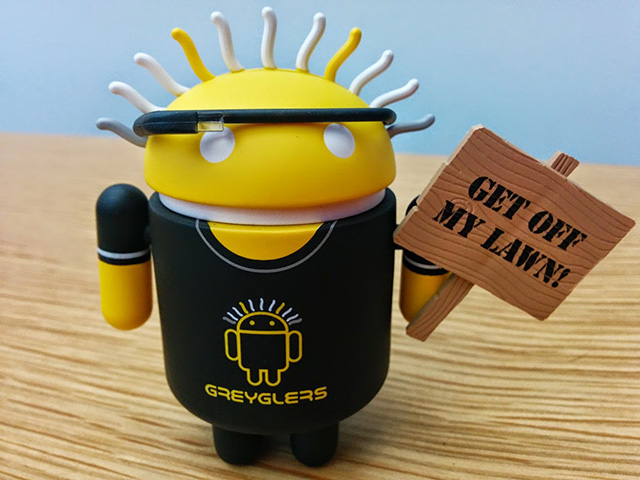
A few years ago I ended a post about youth and age with these words,
Everybody in tech focuses on the importance of “data driven” decisions—until the data doesn’t support the decision they want to make.
That’s when they start talking about the importance of “gut instinct” and “unconscious pattern recognition.”
Data only matters when it supports prevailing prejudice.
Everywhere you look you’ll find well-researched data that proves diversity significantly improves companies’ financial results no matter how you measure them.
Real diversity, however, means more than hiring women and minorities.
It means hiring them — men, women and minorities — at all stages of life.
Because, simply put, experience comes with age — wisdom is supposed to, but there’s no guarantee that it will.
In 2015 Google celebrated it’s experienced people.
The doll, a special edition of Google’s Android mascot, was a jokey tribute to the Greyglers, a group for the 40-and-over crowd at Google, and the doll hinted at how it felt to be an older worker in tech: funny, self-conscious, a little out of place.
That description certainly doesn’t fit Greyglers such as Sundar Pichai, Larry Page, Sergey Brin, and Susan Wojcicki to name the most obvious.
Satya Nadella was 47 in 2014 when he envisioned a new Microsoft. Not only envisioned it, but is orchestrating it into existence.
No way a twenty-something could have done either.
Age has enormous value, especially in fast-moving industries like tech.
The value at all levels comes not only from understanding the need for flexibility and developing it, but also the learning curve that comes from learning/using/discarding/repeat languages, etc. at the speed of tech. Not to mention the empathy that sparks innovation and usually (not always) comes with time and living.
Beyond the norm, the value of age/experience increases exponentially when it come to enterprise products.
Innovative/creative solutions to enterprise challenges resonate more clearly when building on a historical knowledge base than when starting from scratch.
So whether you are focusing on diversity hiring because it’s the right thing to do or for the financial gain, remember that true diversity goes beyond gender and race to encompass age.
Image credit: Search Engine Roundtable
Posted in Culture, Hiring | No Comments »
Tuesday, March 13th, 2018

Way back in 2007 I described what I call the number one best motivator.
Over the years, I’ve found vested self-interest (VSI) to be not only the most powerful people motivator around (…) And the idea must have merit when you consider that a Sudanese cell phone billionaire is using it to incentivize African heads of State to act responsibly.
So, instead of hiring for diversity and the social good, why not hire for greed, pure and simple.
You won’t even need to rationalize your decision, since the data makes it a no-brainer.
Researchers from the Massachusetts Institute of Technology and George Washington University calculated that going from an all-male or all-female team to one with equal representation of men and women correlated with a revenue gain of 41%.
41%! That ain’t chicken feed.
Moreover, the phenomenon is global.
A study of 1,000 companies across 12 countries by McKinsey & Co. showed that those in the top quartile for gender diversity were 21% more likely to have above-average profitability than companies at the bottom of the pile. If companies had a greater balance in ethnicities at work, they would on average perform 33% better than those that don’t. Other studies that McKinsey did in previous years (paywall) yielded similar conclusions.
It seems obvious that women would understand women customers better than men do, but if you doubt it Home Depot is an excellent case study.
Trish Mueller joined HD and became CMO a few years later. She recognized that the data collection showing most purchasers were male was incorrect and the company set out to disversify their market.
In 2013, the Home Depot’s core executive team had a strategy meeting about how the brand could appeal to more customers and markets—like women—and expand their product range. There were two women executives in the room: Mueller and Cara Kinzey (Senior Vice President, Technology). Trish and Cara suggested that the brand’s product range should be as wide as its name. Home Depot included the word “home,” after all, and could expand into product categories like cookware, small appliances, and kitchen accessories.
“Cara and I came at it from a women’s perspective,” Trish says, “without it being that overt.”
They decided to test their ideas on the next Black Friday sale.
They gave their merchants a broad mandate: “If it’s something you can conceive of using in your home, let’s have a conversation about it.”
Some of the home appliances and cookware options they tested proved so successful that they’re now kept long-term inside every store. The Home Depot also had some rather unexpected hits during their Black Friday sales, like a giant fluffy teddy bear that sold for $29.99. “Who would’ve ever thought to see that at Home Depot?,” Mueller says. “But we were sold out in ten minutes, the first year we carried them.”
But is the effort paying off consistently beyond Black Friday?
Unlike smaller rival Lowe’s, Home Depot isn’t aggressively adding to its store base. In fact, it has opened just one new location in the U.S. market since 2013. Yet the retailer is beating Lowe’s in overall revenue growth thanks to its stronger customer traffic.
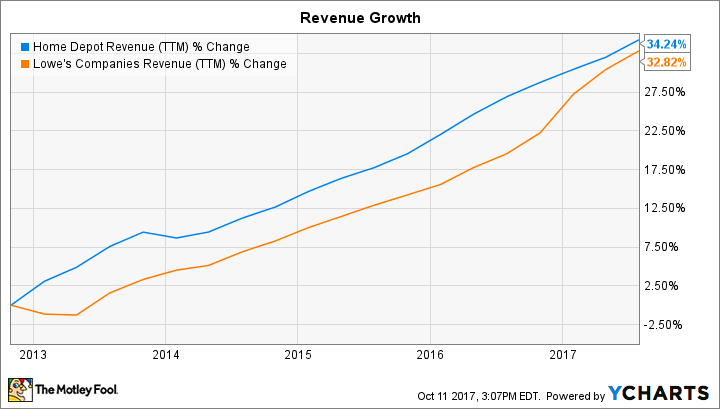 Would HD have had the savvy to go after the women’s market without Mueller’s and Kinzey’s viewpoint? Unlikely for guys who thought pink power tools were the answer. Would HD have had the savvy to go after the women’s market without Mueller’s and Kinzey’s viewpoint? Unlikely for guys who thought pink power tools were the answer.
Has it translated to more diverse hiring? It has in Canada (I couldn’t find US stats).
So, for all you guys who have no time for moral imperatives, turn your VSI up to high and do it for greed.
Image credit: Pexels and MotleyFool
Posted in Communication, Culture, Ducks In A Row, Hiring | 1 Comment »
Monday, February 19th, 2018
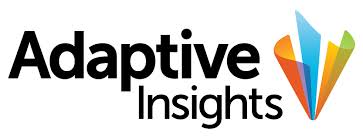
Poking through 11+ years of posts I find information that’s as useful now as when it was written.
Golden Oldies is a collection of the most relevant and timeless posts during that time.
In a country still focused on youth it’s good to remember that Rob Hull was no spring chicken when he founded Adaptive Insights in 2003, was rejected 70 times by VCs and survived the 2008 recession. Adaptive is now a software unicorn that seems to have no interest in chasing spring chickens when hiring — just great talent of whatever age — and ranks 3.9 on glassdoor.
Read other Golden Oldies here.
Who does a company, with explosive growth, founded and built by old folks in their forties and fifties all with extensive executive management experience, turn to when moving to the next level?
The company hasn’t disclosed exact revenue figures, but it says it grew new annual recurring revenue by more than 50% in 2014, and claims more than 2,500 companies, including Coca Cola, Toyota, and AAA use its software. It’s raised $100 million in funding from investors like Salesforce, Norwest Venture Partners, and Bessemer Venture Partners.
The company is Adaptive Insights and the guy is Tom Bogan, an even older guy, with even more experience.
A guy who is (gasp) 63 years old.
Gasp, because according to a recent study, old people shouldn’t even go out in public.
When a large sample of Facebook groups created by 20- to 29-year-olds was examined by a team based at the Yale School of Public Health, three-quarters of the groups were found to denigrate old people. More than a third advocated banning old people from public activities like shopping.
Of course, one assumes that the ‘old people’ to which they refer aren’t their relatives.
(I’d like to hear them on the subject 10, 20, 30 and 40 years from now.)
There is enormous value in having ‘been there/done that’ through multiple economic cycles, cultural change, globalization and technology evolution/revolution.
But to take advantage of it you need to be comfortable enough in your own skin to admit you need to learn — like Mark Zukerberg and Larry Page.
Image credit: Adaptive Insights
Posted in Golden Oldies, Hiring, Leadership, Retention | No Comments »
Friday, September 22nd, 2017
A Friday series exploring Startups and the people who make them go. Read all If the Shoe Fits posts here.
 Quick. Off the top of your head, what are the chances you’d hire a 65 year-old Black man for a senior management role in your startup? Quick. Off the top of your head, what are the chances you’d hire a 65 year-old Black man for a senior management role in your startup?
Unlikely — or flat-out ‘no’?
Next question.
How well could you handle traveling from the Bay Area to Detroit to Toronto back to the Bay Area and then to New York, London and Columbus, Ohio, back to the Bay Are for one night, then to Singapore, Australia, and Hong Kong for ten days, with a side trip to Seattle?
That was the recent schedule of the 65 year-old Black guy you probably didn’t hire.
Tough schedule, jumping around all those times zones; think it would dent your 20/30-something system more than the 70+ hour week you brag about?
The guy you didn’t hire is John Thompson, but that’s OK, he already has a job.
He’s CEO of Virtual Instruments, one of several startups he invested in after he retired from his ten year stint as CEO of Symantec, which came after his mandatory retirement from IBM after 28 years.
That little age bias you have would also preclude your hiring Impossible Foods founder Patrick Brown (62), Qualys CEO Philippe Courtot (70), Oracle cofounder Larry Ellison (73), Netflix’s Reed Hastings (56) and dozens, if not hundreds, of others.
The interesting (hilarious? ironic?) part is that if you were using most recruiting filtering tools, human or software, their resumes would probably be screened out.
Now just think how much larger your pool of exceptional talent would be if you brought yours and your organization’s biases/assumptions/prejudices under control.
What talent shortage?
Image credit: HikingArtist
Posted in Entrepreneurs, Hiring, If the Shoe Fits | No Comments »
Monday, March 13th, 2017
It’s amazing to me, but looking back over more than a decade of writing I find posts that still impress, with information that is as useful now as when it was written.
Golden Oldies are a collection of what I consider some of the best posts during that time.
Bosses are usually unrelenting when something goes wrong with a product/service. They, the team and often the entire company work to not only find the cause, so it won’t happen again, but also to placate their customers.
However, when the problem is an internal human one, they are more hesitant to root it out, since that often means first looking in the mirror and then actually changing (not just paying lip-service until the turmoil dies down).
Read other Golden Oldies here.
A Friday series exploring Startups and the people who make them go. Read allIf the Shoe Fits posts here
 In the right frame of MAPping Company Success it says, “Have a quick question or just want to chat?” along with both email and phone number. In the right frame of MAPping Company Success it says, “Have a quick question or just want to chat?” along with both email and phone number.
A few weeks ago a “John,” a founder, called me to see if I had any idea why his turnover was so high.
In response to my questions he described his company’s culture, management style, product, etc.
I told him that assuming what he said was what was actually happening then something else was going on.
Since we are several thousand miles apart, we came up with the idea of using a stationary camcorder to tape the interactions; a “set it and forget it” approach to capture the norm and not performances.
A few days later he sent me a link to see the results.
I choked at the length, but it didn’t take that long to find what the likely problem was.
To see if my instinct was correct, I watched the entire nine hours on fast forward.
What I saw was that, almost without exception, during every interaction John had, whether with programmers or senior staff, he interrupted them to take calls or respond to texts.
We discussed the ramifications and effects of the constant interruptions and I asked him how he would feel if they had acted the same way.
He said it had happened to him and he usually felt annoyed, offended or both.
So I asked why they would feel any different.
John said that also explained why one senior developer said he preferred to work where he was shown some respect.
John had chalked it up to the developer’s age and that he couldn’t handle the casual atmosphere, but thinking back the guy had had a good relationship and no problems with the team.
I suggested that instead of saying anything he just change, i.e., pay attention and not interrupt, since actions speak louder than words.
I also sent him this image as a constant reminder.
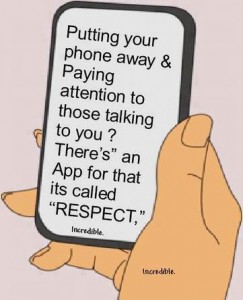
John went further than changing; he called the most recent three who had left, apologized and said he would like them to come back.
One had already accepted a job, but the other two decided to give it another shot.
They both said that his candidness, honesty in recognizing the problem and sincere apology made it likely he would follow through.
Image credits: HikingArtist and via Imgfave
Posted in Communication, Culture, Golden Oldies, Personal Growth, Retention | No Comments »
Friday, February 17th, 2017
A Friday series exploring Startups and the people who make them go. Read all If the Shoe Fits posts here.
 How many members of your team have been “bloodied in combat?” How many members of your team have been “bloodied in combat?”
How many have worked successfully through multiple economic (upturns/downturns) realities?
Who would you ask if you needed dynamic (question/discuss), as opposed to static (online postings), advice of “the been there/done that” variety to
- land a candidate;
- sell in a recession;
- tweak/kill a marketing campaign;
- beat the competition; or
- Layoff a team member?
Don’t ask me; I’ve answered this question multiple times in varied forms.
Instead, ask millennial Tom Goodwin.
Maybe you’ll listen to him.
Image credit: HikingArtist
Posted in Hiring, If the Shoe Fits, Leadership | No Comments »
Thursday, August 4th, 2016

It’s always interesting to see young people following in the footsteps of their predecessors.
Even more so when they hotly deny doing it.
But the frosting on the denial cake is that they are following in some of the stupidest footsteps.
Which they are doing in droves.
Last week I wrote how stupid it is to stereotype 80 million millennials.
Before that is was management’s stupidity regarding Gen X.
Age, however, is the biggest stupid and has been for decades.
For Boomers, the breakpoint for when a person became hopeless and valueless was 30; Millennials raised it to 40.
As bad as age discrimination has been in general, it is far worse in tech.
VC Vinod Khosla crystallized and popularized this mindset back in 2011.
“People under 35 are the people who make change happen. People over 45 basically die in terms of new ideas.”
That means you can expect no more creativity from Larry Page, Sergey Brin, Marc Benioff, Parker Harris and Satya Nadella. (For insight to other fields read the article.)
Not to mention that 32 year-old Mark Zukkerberg only has a few good years left.
There are thousands more at all levels, I just picked recognizable people to better illustrate the stupidity.
The difference between when the Boomers did it and now is the notice and action being taken.
This past week, the EEOC joined a probe behind a federal class action lawsuit against Google filed last month, charging that the search giant “engaged in a systematic pattern” of discrimination against applicants over the age of 40. The suit, expanding upon a related case filed earlier this year, cited data from Payscale that placed the median age of Google’s workforce at 29, with a margin of error of 4%. By contrast, the median age for U.S. computer programmers is 43.
Actually, I will probably find it somewhat amusing to watch founders as they try to meet candidate demand for the compensation and perks of the past few years in today’s do-more-with-less/revenue-based-business-model world.
That also goes for many, not all, by a long shot, tech workers who are looking for those same jobs and perks.
So heed the advice I recently gave a founder who took advantage of my standing offer of free help (both my phone number and email are posted on this blog).
He asked how to land a “star” candidate looking for “yesterday’s” compensation and refused to consider anything less.
My advice was to take a pass, refer him to Facebook or Google hire a reality-based programmer who can do the needed job and was sincerely interested in his product and vision.
The only thing he might lose were a few late night bragging rights.
In short, grow up, get smart and hire talent — no matter its age or color or gender.
Flickr image credit: Ben Sutherland
Posted in Culture, Entrepreneurs, Personal Growth | No Comments »
|
 Subscribe to
Subscribe to
MAPping Company Success
About Miki 
Clarify your exec summary, website, etc.
Have a quick question or just want to chat? Feel free to write or call me at 360.335.8054
The 12 Ingredients of a Fillable Req
CheatSheet for InterviewERS
CheatSheet for InterviewEEs™
Give your mind a rest. Here are 4 quick ways to get rid of kinks, break a logjam or juice your creativity!
Creative mousing
Bubblewrap!
Animal innovation
Brain teaser
The latest disaster is here at home; donate to the East Coast recovery efforts now!
Text REDCROSS to 90999 to make a $10 donation or call 00.733.2767. $10 really really does make a difference and you'll never miss it.
And always donate what you can whenever you can
The following accept cash and in-kind donations: Doctors Without Borders, UNICEF, Red Cross, World Food Program, Save the Children
*/
?>About Miki
About KG
Clarify your exec summary, website, marketing collateral, etc.
Have a question or just want to chat @ no cost? Feel free to write
Download useful assistance now.
Entrepreneurs face difficulties that are hard for most people to imagine, let alone understand. You can find anonymous help and connections that do understand at 7 cups of tea.
Crises never end.
$10 really does make a difference and you’ll never miss it,
while $10 a month has exponential power.
Always donate what you can whenever you can.
The following accept cash and in-kind donations:
|











 Quick. Off the top of your head, what are the chances you’d hire a 65 year-old Black man for a senior management role in your startup?
Quick. Off the top of your head, what are the chances you’d hire a 65 year-old Black man for a senior management role in your startup?


